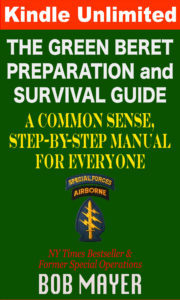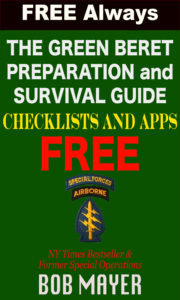The First Five Things To Do In An Emergency
Every situation is different and
this is a guideline. Always make sure your priority is safety for yourself
first, then others. You can’t help others if you don’t take care of yourself.
First: Do a First Aid triage of yourself. Breathing. Bleeding. Broken.
Are you stabilized?
Can you move?
Assess the
immediate situation. Take charge.
If in
immediate danger, get to a safe place. If you’re not in immediate danger, look
around.
What are
the priorities of threats? Other people will be panicking. Don’t get caught up
in that. Be aware that any situation can get worse. In fact, assume it will.
Also, having done your Area Study, you know there are after-effects of various
emergencies and natural disaster. Earthquakes around the coast can lead to
tsunamis. A terrorist attack could have a follow on attack for first
responders. A hurricane can lead to broken gas lines which lead to a fire
danger.
Check for
smoke, gases and fumes. Locate and shut off the source if possible. Fires,
earthquakes, bombs, etc. produce structural instability. Just because the roof
is still there, doesn’t mean it will stay there.
If in a
car accident, turn off ignition, look out for pools of gas or any smoke.
Second: Call for help. Dial 911. Yell. Blow a whistle. Tap on a pipe with a piece of metal. Whatever is appropriate to the event. If you’re performing CPR, yell at someone nearby to call for help. Tell them what to say.
Getting
trained personnel on the scene quickly is the best assistance you can render
others. If you talk to a dispatcher, give a succinct summary of the situation:
Location; what the emergency is; how many casualties and an estimate of
condition; any potential threats.
If it is a
mass casualty event, let them know that right away as the response will be
different as a single responding unit would be overwhelmed.
Third: Do a First Aid Triage of others. Triage comes from the French word ‘to sort’. The goal is to rapidly assess and prioritize a number of injured individuals and do the most good for the most people. The key here is it is not to do the best for every individual.

First,
make sure the injured are not in imminent danger.
How many
are injured? How badly?
Who can
assist you?
Can
assistance get to you?
Can the wounded by moved if they
have to be? Do you have the means to move them?
If immediate help is on the way,
don’t take any unnecessary risks. Don’t move an injured person unless they are
in immediate danger. Don’t treat past life-saving measures. Let the
professionals do their job when they arrive. Your job is to maintain until help
arrives.
What is the status of your A-Team? If some members aren’t present, where are they? Can you communicate with them and arrange to meet? If you can’t communicate with them, can you contact your out of area emergency contact? If that’s not possible the priority of meeting locations will be in order: home, IRP, ERP, BOHS.
All preparation checklists and links to free apps is free HERE.

Fourth: Assess the environment. Can you stay or do you need to leave? Do you have adequate shelter where you are for the environment? If you’re staying, at home, at the IRP, ERP, work, school, wherever, inventory your supplies and gather what you can. Focus on water, communication, food and medical.
If leaving and you have time, dress
in your emergency clothing. Take your Grab-n-Go bag (home, car or work/school).
If leaving, are you going to the IRP to meet A-Team? Or is it best to go direct
to the ERP?
If you’re leaving and not going to
any of those, what is your destination? Can you get hold of your out of area
emergency contact? Are they clear of the effect of the emergency or disaster?
The destination should be chosen by priority among shelter, water, food, and
medication.
Fifth: Once in a safe place, assess the overall situation and make long term plans.
Excerpted from The Green Beret Preparation and Survival Guide



